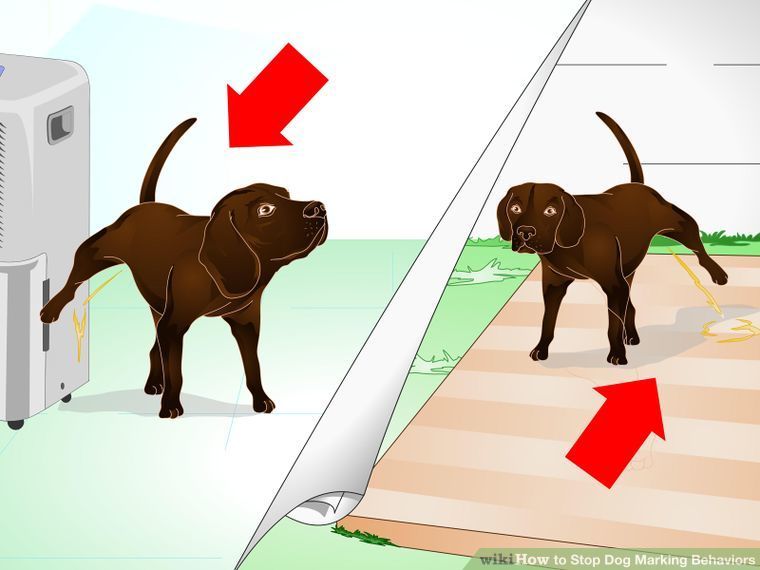Everybody loves dogs. They are cute, smart, playful, love to make us happy, and love us unconditionally. But if you notice them, they seem to be particularly interested in peeing on tires. Have you ever wondered why dogs preferred to pee on tires? This behavior of dogs has been a mysterious fact about them. Some people think that it is a dog thing and doesn’t mean anything. At the same time, some other people think that it is a dog behavior issue. Their urine says many things about them, and only dogs can understand these things. It can be very irritating if your dog is constantly peeing on tires. So in this article, we will discuss why and how to keep dogs from peeing on tires.
Table of Contents
The first step is to figure out why your dog pees on tires. Dogs have a great sense of smell. They use their urine as a way to mark their territory or assert their ownership for their existence in an area. Each urine has its own scent, and dogs are able to identify that and differentiate, making it a great way of communication. So for dogs, it makes sense to urinate on things that are at their nose level.
There are several reasons why your dog pees on tires. Let’s discuss them all:
Dogs are extremely territorial animals. They love to mark their territory, and tires are the prime spot. They pee on such places to mark territorial boundaries. Dog’s urine shares a lot of information like age, reproductive status, social status, health for other dogs. Also, dogs can find out whether the female is in heat or not and determine the gender of the other dog. They mark the tire with urine to communicate with their canine friend. So whenever the dog urinates on a tire, the other dog notices that another dog takes this place, and he can’t resist leaving his mark on that place. So this could be one of the reasons behind peeing on tires.
Dogs pee on vertical objects because it allows them to leave their mark at nose level. Dog pee shares a lot of information, and, amazingly, the mere presence of liquid waste can gather that.
According to Bruce Fogle, veterinarian & author of Know Your Dog, the vertical surface makes the scent of pee last a little longer than a horizontal surface. Also, the air catches the scent of pee and spreads it even further.
According to Bonnie v beaver, author of canine behavior, dogs prefer to urinate on vertical objects because of their preference to pee by lifting one leg. That’s why dogs love to pee on tires.
It sounds weird, but yes dogs love the stinky smell. They love to sniff on objects that smell bad. Tires have a lot of stinky smells like feces, rotten food, poop, pee of other dogs, etc. tires hold smell for a longer period, so dogs prefer to pee on tires. Dogs that pee on the tires will leave their stinky traces of pee for other dogs.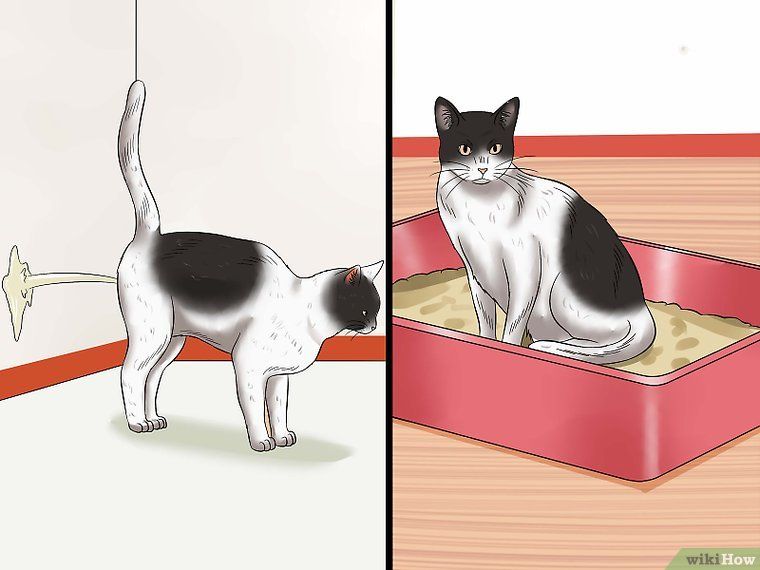 That’s the reason dogs love the smell of rubber. Dogs can sniff out the smell which is present in tires by their smelling powers. A tire is an array of scents, and your dog loves the smell of that.
That’s the reason dogs love the smell of rubber. Dogs can sniff out the smell which is present in tires by their smelling powers. A tire is an array of scents, and your dog loves the smell of that.
When a dog reaches their sexual maturity and hit puberty, we can see many behavioral changes in them. When puberty hits them, most male dogs begin to raise their leg when peeing. Female dogs also raise their legs to urinate only when in heat. So they start urinating on tires to attract male dogs to mate with them. Once a male dog smells the urine, it instantly knows that a female dog is in heat. This is one of the reasons why dogs pee on tires.
Not all dogs lift their legs to pee on tires. Only those dogs who reach their sexual maturity or hit puberty do that. Dog urine has a lot of information about them and contains communicative hormones, which help them communicate with other dogs. They also mark their territory for other dogs. Many female dogs also pee on tires when in heat to welcome male dogs. So we cannot say that all dogs pee on tires, but some do not do that.
Many female dogs also pee on tires when in heat to welcome male dogs. So we cannot say that all dogs pee on tires, but some do not do that.
A trained dog knows the difference between peeing outside and peeing inside. Now you know the reason why your dog is so obsessed about urinating on tires, and now you want to know how to stop your dog from peeing on tires? Let’s focus on some tips to work on how to keep your dog from peeing on tires. Following are some best ways to deal with a dog peeing on tires without harming them. Here are several ideas.
The best way to keep a dog from peeing on tires is to prevent access near the car. Start parking your vehicle in the garage. But if the car is parked outside or in other places, you can control its movement by putting a leash on it. Another way to keep your dog from peeing on tires is to put covers on them. You can cover tires with pieces of cardboard or plywood. In this way, you can block his access to the car.
Start parking your vehicle in the garage. But if the car is parked outside or in other places, you can control its movement by putting a leash on it. Another way to keep your dog from peeing on tires is to put covers on them. You can cover tires with pieces of cardboard or plywood. In this way, you can block his access to the car.
I know this is not the efficient way, but removing the traces of odor from the tires can prevent dogs from peeing on it to some extent. If a dog has peed on tires, they need to be cleaned as soon as possible so that no other dog can be attracted to it. You can use animal-friendly cleaners to remove the odor of pee. This method might not be that effective because of their natural instinct to pee on vertical objects. But giving a try to this method would not cause any harm, maybe it works.
The redirection method is the best way to keep your dog from peeing on tires. You can change the direction of your dog if you see him going toward the car.
Training is the best way out of all methods. Start training your dog when he is small so that you may not face this problem when he becomes big. Train your dog to leave it or no tire command whenever you see him attracting towards the tire. Always supervise him when around the tires so that you can use a command to prevent him from peeing on tires. This method might require a little patience but trust me it will definitely work.
Punishment is not a good idea. Never use negative reinforcement on your dog. It can only make him anxious and aggressive. Your dog may lose trust in you if you scold or punish him. Scolding your dog may backfire. Just understand dogs take some time and effort to learn new things. Instead of negative reinforcement, use positive reinforcement to reward your dog when he chooses not to pee on tires. These bad habits of your dog can be broken without punishment.
These bad habits of your dog can be broken without punishment.
Neutering will somehow keep your dog from peeing on tires, but it is not a guaranteed fix. Neutering the dog before he hits full puberty is likely to reduce the tendency to mark on tires. Do consider neutering your dog because it will reduce the habit of marking urine on tires. In many cases, spayed or neutered dogs stop pee marking within weeks or months of the procedure.
There are many dog repellents in the market. You can also make one at home. Whenever your dog pee on tires, just spray dog repellent so that they will not come next time to pee on tires. By spraying some dog repellant on tires, you can stop your dog from coming near car tires.
The way humans and animals see the world is quite different. Dogs pee on tires to communicate with other dogs. They mark their territory on tires to show dominance or, in other words, to tell that this area belongs to them.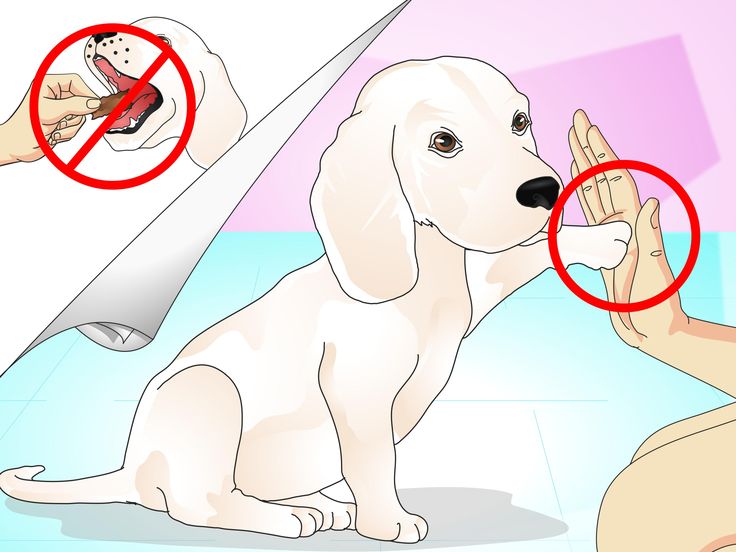 If you train your dog, then it should not be too difficult to discourage the behavior. Your dog will encounter tires every day, which makes them curious. So to avoid such problems, you can use the above methods to stop your dog from peeing on tires. It may take some time and effort, but your dog will definitely learn.
If you train your dog, then it should not be too difficult to discourage the behavior. Your dog will encounter tires every day, which makes them curious. So to avoid such problems, you can use the above methods to stop your dog from peeing on tires. It may take some time and effort, but your dog will definitely learn.
You might also like to read
Anuja Saxena
I am a pet lover who spent her childhood in the company of a friendly Labrador Retriever. I believe that pets make our lives more enjoyable and stress-free. Currently, I have two budgies Kiwi & Koko as pets, and planning to adopt a pup soon. So, here I am, attempting to share my experiences and knowledge to improve the lives of pets and pet owners.
Vet approved
The information is current and up-to-date in accordance with the latest veterinarian research.
Learn more »
Dogs have sometimes maddening habits that test their owners’ patience. If you landed on this page, chances are peeing on the tires is one of them. We’re guessing that during your daily walks with your doggie, you have noticed that he particularly enjoys urinating on car tires, if not your own car tires at home. But why? In short, it’s a way to communicate with other dogs and leave a record of their “visit.” Let’s take a deeper look at this quirky canine behavior.
For a dog, marking his territory is a fundamental way of communicating with his canine companions. Therefore, when a dog notices that another dog has urinated in a place, he can’t resist leaving his mark too! He takes the opportunity to leave his scent which carries a lot of information for his congeners.
For example, a dog can determine if a female is in heat if a dog is neutered, healthy, or anxious. All from a single urine mark.
All from a single urine mark.
So, smells are hugely important to dogs, and if your dog has gotten into the habit of depositing his scent in certain places during his walk, like the neighbor’s tires, he’s likely to want to continue doing so.
Image Credit: KANUT PHOTO, ShutterstockThere’s another simple reason why dogs pee on car tires. For many dog breeds, the wheels are the right height for them to aim and fire away!
Dogs prefer to urinate on vertical objects, like poles and tires, as this allows them to leave their mark at nose height. So, leaving their mark in this way communicates a lot of things, but also the size of the dog. In fact, a very large, long-legged dog may find it more comfortable to urinate on a tree trunk than on a tire, the latter of which may be too low for him.
But in general, the tires are the perfect height for medium and small dogs to relieve themselves and leave their mark after smelling the scent of the dogs that came before them. Also, a vertical object like a tire will retain the smell of pee longer than a puddle of urine on the lawn.
Also, a vertical object like a tire will retain the smell of pee longer than a puddle of urine on the lawn.
Another reason for the powerful attraction of tires to dogs is the overpowering smell of rubber. Indeed, rubber is a material that absorbs other odors, much more than the metal of a car or the concrete of the sidewalk. Thus, a dog that pees on the tires of a car will leave a very fragrant trace for the following dogs, which will have an additional reason to do the same.
It’s quite possible that the behavior of your best furry friend is bothering you, or is perhaps ruining your relationship with your neighbors! In this case, a few solutions are available to you:
Many vehicle owners, tired of dogs relieving themselves on their rims, buy dog repellent for their cars.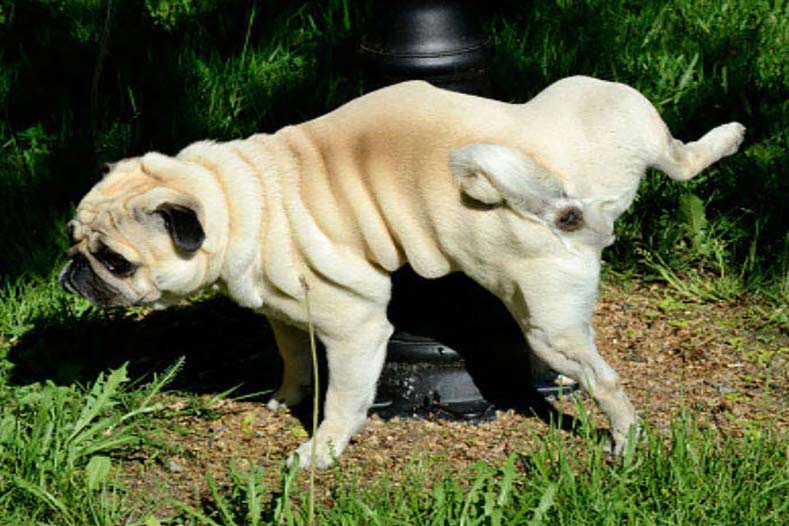 This kind of repellent is sprayed or sprinkled on the tires, covering the smell of rubber with an unpleasant odor for the dog, without being dangerous for the animal.
This kind of repellent is sprayed or sprinkled on the tires, covering the smell of rubber with an unpleasant odor for the dog, without being dangerous for the animal.
You can also make it yourself, by mixing ingredients such as mustard, coffee grounds, or even pepper with white vinegar, which is particularly fragrant and effective in disinfecting and masking the powerful smell of dog pee.
Another good option is an enzyme cleaner:
No matter how hard you try, pets will always leave you cleaning up smells, stains, vomit, hair, and everything in between. With the Hepper Advanced Bio-Enzyme Pet Stain & Odor Eliminator Spray, you can advance your clean-up routine!
It permanently removes the very worst pet stains and smells (and truly makes clean-up a breeze). Click here to learn more, order a bottle, and freshen up your home today.
At Pet Keen, we’ve admired Hepper for many years, and decided to take a controlling ownership interest so that we could benefit from the outstanding products of this cool cat company!
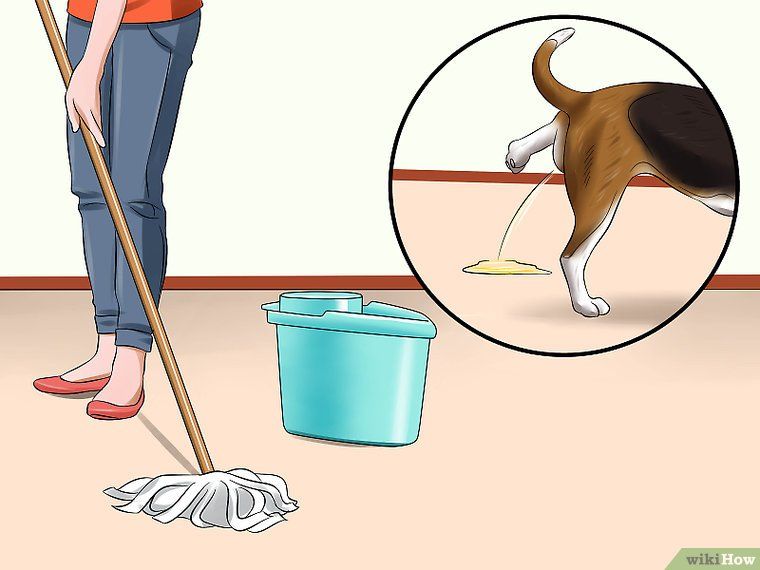 Use Avoidance-Based Strategies
Use Avoidance-Based StrategiesIf it bothers you that your dog urinates on the wheels of cars on your walks, you can use avoidance strategies. It’s very simple: you just have to avoid walking your dog near parked cars, preferring places like parks. Also, you should always keep your pet on a leash.
However, don’t scold your dog when you catch him in the act. Indeed, if you strongly reprimand your dog when he leaves his mark on the tires, he may believe that you are punishing him for urinating. Misinterpreting the message could cause your dog to refrain from peeing, leading to anxiety and accidents around the house.
Quick Tip: Always carry a bottle of water with you, so you can quickly rinse the rims and tires of the car your dog has chosen to mark!
Dogs don’t discriminate where they pee. Any place can do the trick, but when it comes to car tires, it’s like a big feast of smells that tickle your pooch’s nostrils! Impossible for him to resist: he must leave his mark so that his canine companions know that he has been there too!
See also:
Featured Image Credit: Sanit Fuangnakhon, Shutterstock
Have you ever rolled your eyes at your dog's habit of urinating on every stone and tree while walking? Perhaps this annoys or embarrasses you, especially when she marks something less appropriate.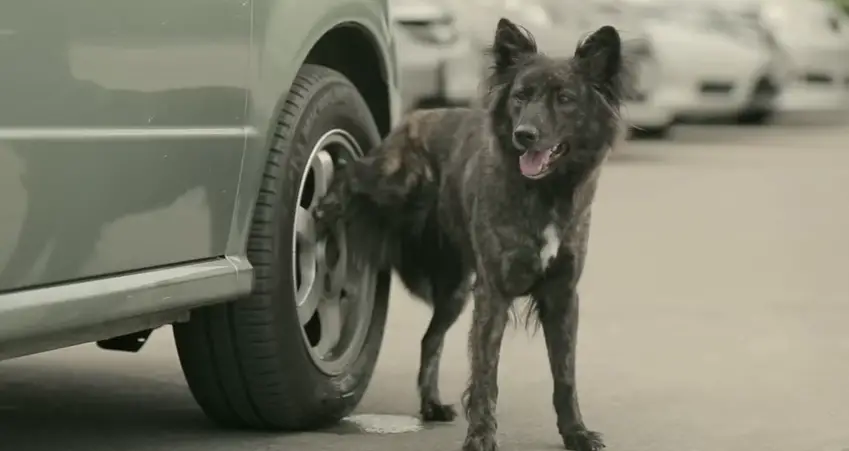 Is there anything you can do to influence this behavior, which is called "tagging the territory"?
Is there anything you can do to influence this behavior, which is called "tagging the territory"?
If a dog marks his territory with a small amount of urine, it is probably nothing more than a way to greet his relatives who may be nearby. This is an absolutely normal instinctive way of communication of this species of animals - they have been doing this since long ago, when people began to track their behavior. In addition to the desire to communicate, there are several other reasons why they mark.

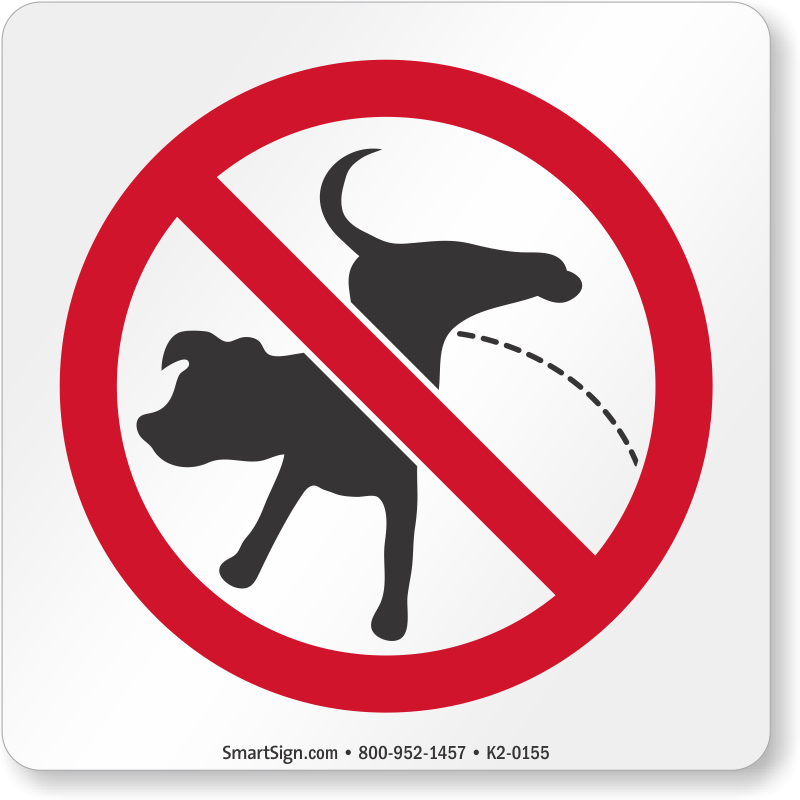
It is also worth noting that some dogs urinate frequently for reasons unrelated to tagging, including conditions such as obedience urination and separation anxiety. Or is it just illiterate home training. Understanding the causes of a dog's behavior is a critical step to addressing related problems.
Although dogs' habit of marking territory is a natural behavior inherited from their ancestors, in today's world you may be annoyed or embarrassed by such a habit. How can you wean a pet from this habit, or at least reduce his desire to mark? The UC Davis School of Veterinary Medicine offers several recommendations.

Avoiding bad practices is just as important as keeping good ones. If you yell at your dog or otherwise punish him while he is marking, he will hide the behavior, making it even harder to stop it. You must remember that the habit of marking is a natural instinctive behavior of your pet, and although there are ways to minimize it, you should remember that most dog owners experience it. If you want your dog to tread less, just be patient with him, train him thoroughly, and he will begin to reward you with more enjoyable walks.
If you yell at your dog or otherwise punish him while he is marking, he will hide the behavior, making it even harder to stop it. You must remember that the habit of marking is a natural instinctive behavior of your pet, and although there are ways to minimize it, you should remember that most dog owners experience it. If you want your dog to tread less, just be patient with him, train him thoroughly, and he will begin to reward you with more enjoyable walks.
Cara Murphy
Cara Murphy is a freelance journalist and pet owner based in Erie, Pennsylvania. She has a goldendoodle named Maddie.
One of the stages of raising a puppy is teaching him to use the toilet outside. With sufficient attention and competent actions of the owner, the puppy gets used to emptying the intestines and bladder during a walk. But it happens that the dog, even after coming out of puppyhood, continues to make puddles at home.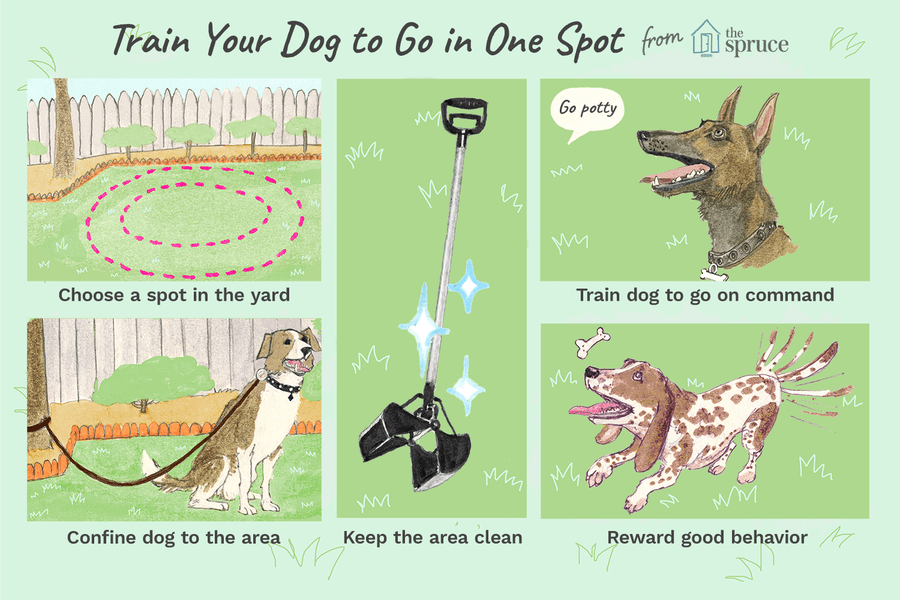
Below we will analyze what can be the reason that an adult dog or puppy pees at home, what should be paid attention to in its behavior and health and how to wean from such behavior.
As a rule, a dog goes through the following stages of its relationship with the toilet :
 This trend is then used by the owners to teach them to walk on a diaper.
This trend is then used by the owners to teach them to walk on a diaper.
Understanding all these natural steps, the owners need to be prepared that cleaning up after the puppy in the house is an inevitable process.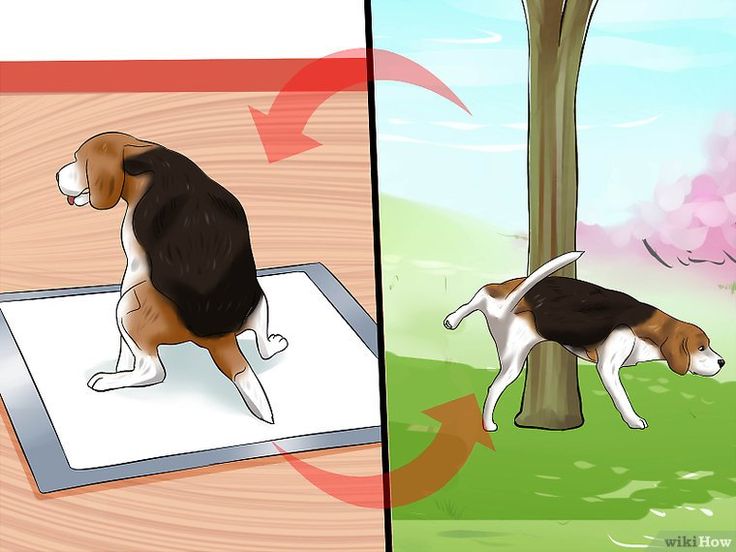 And it is connected with the fact that a puppy cannot go outside until a certain age, and then it takes time to develop a habit and mature.
And it is connected with the fact that a puppy cannot go outside until a certain age, and then it takes time to develop a habit and mature.
Some factors sometimes interfere with the natural formation of toilet habits on the street:
 In some individuals, stress blocks the development of new skills and good manners, or leads to the return of the habit of making puddles at home.
In some individuals, stress blocks the development of new skills and good manners, or leads to the return of the habit of making puddles at home. 
Whatever the reason for excessive water intake, the dog will have an increased need to urinate, which is fraught with unplanned puddles in the house.
There are two main ways to work with a pet’s behavior, including weaning it from unwanted things:
 Often many dogs stop their action and continue it already on the ground or grass.
Often many dogs stop their action and continue it already on the ground or grass.
In summary, the surest strategy is not to unlearn per se, but to replace one behavior with another.
What actions will help bring the moment when the dog stops going to the toilet in the house:
 Later, you can reduce the praise, but at the initial stage, you need to reinforce good habits regularly;
Later, you can reduce the praise, but at the initial stage, you need to reinforce good habits regularly;  All this happens closer to the time of puberty - to 8-9months;
All this happens closer to the time of puberty - to 8-9months;
This paragraph can be limited to one word: no way . There is no need to react to the fact that the pet once again could not restrain himself and emptied his bladder in the house.
It is more natural for dogs to go to the toilet outside:
As we can see, there are all prerequisites for the pet to quickly master the desired behavior on a walk. Therefore, if the owner does everything right, the result will not be long in coming.
If the puppy reacts violently to puddles on the floor, the puppy may learn that this is one of the ways to attract the attention of the owner, and in this case it will be more difficult to wean from bad manners.
Contrary to popular belief, dogs do not take revenge and do not show offense with the help of puddles and heaps. If the dog went to the toilet in the wrong place, then, as a rule, there is an explanation for this: the state of health, stress factors, violation of the walking schedule. Therefore, there should not be a negative reaction from the owner. Moreover, an unfriendly tone, attempts to shame, a stern look, and even more so physical punishment will not help change such behavior, but will only create tension in the pet. And stress, in turn, will help the dog to control himself less and follow the learned rules of behavior.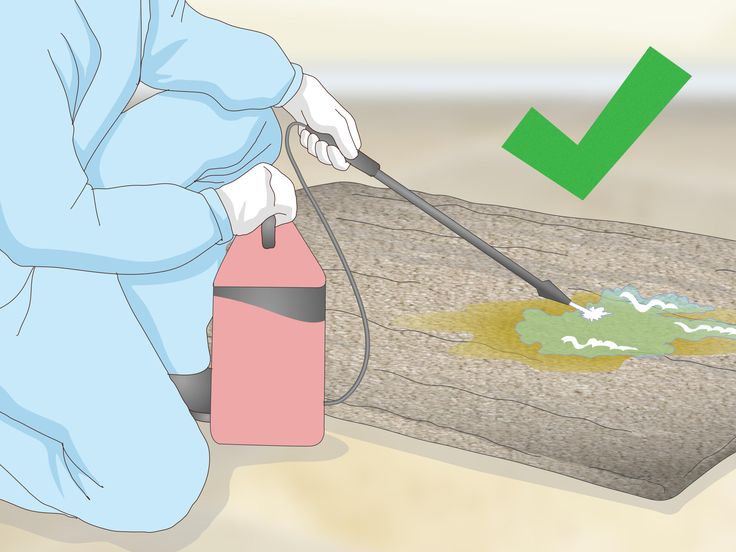 She is more likely to return to instinctive reactions, accordingly, she will satisfy her needs instantly, without waiting for a walk, or she will hide before "wetting her pants."
She is more likely to return to instinctive reactions, accordingly, she will satisfy her needs instantly, without waiting for a walk, or she will hide before "wetting her pants."
To avoid a vicious circle, it is worth refusing any kind of punishment for toileting in the wrong place.
Sometimes pets react so violently to the return of the owner or the arrival of guests that they make puddles. Regular repetition of such an action can significantly overshadow the joy of meeting with a dog, so it is important to interrupt such an action. You can switch attention to search activity, food or a toy. There are examples of tasks on the Internet that are recommended to be given to the dog to solve (for example, roll treats into a rug). Or you can just sprinkle a few small pieces of treats directly in the hallway so that the pet is distracted from the owner, switching to nose work. Dogs that prefer games more than food can either be commanded to “bring a toy” or present a favorite ball that was specially hidden before the owner left.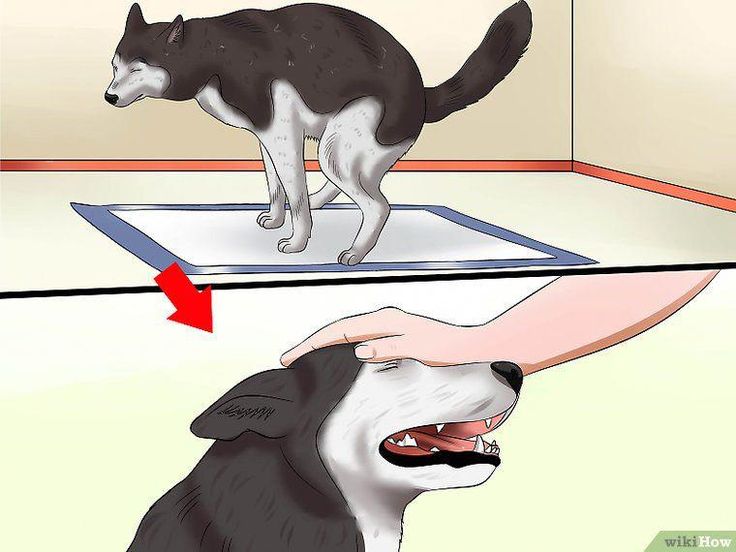
When the tension eases, you can take your pet on a leash and go outside to do all the planned things in the right place.
Fear of the street can block the willingness to learn to walk. Vehicles, fireworks, aggressive dogs, and other stimuli can frighten a puppy, resulting in resistance to going outside, much less exploring and marking the area.
If the owner noticed signs of stress in a pet on the street, then gradual adaptation to walks, stress relief, development of positive associations for walking is necessary. They can help:
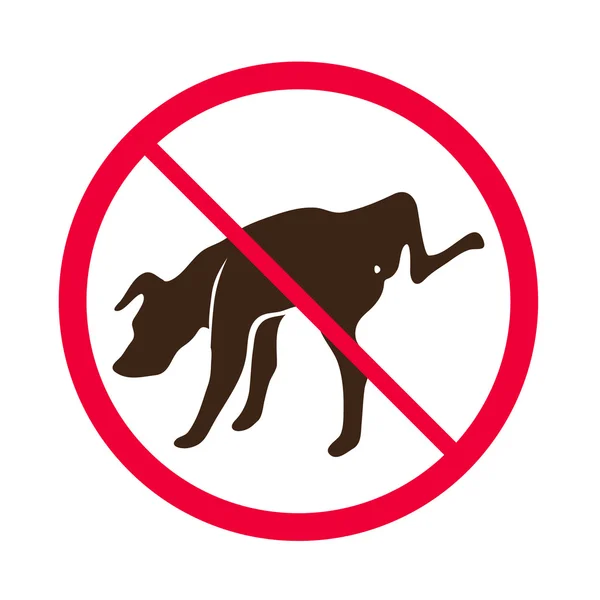
The following actions will help encourage you to urinate on the grass:
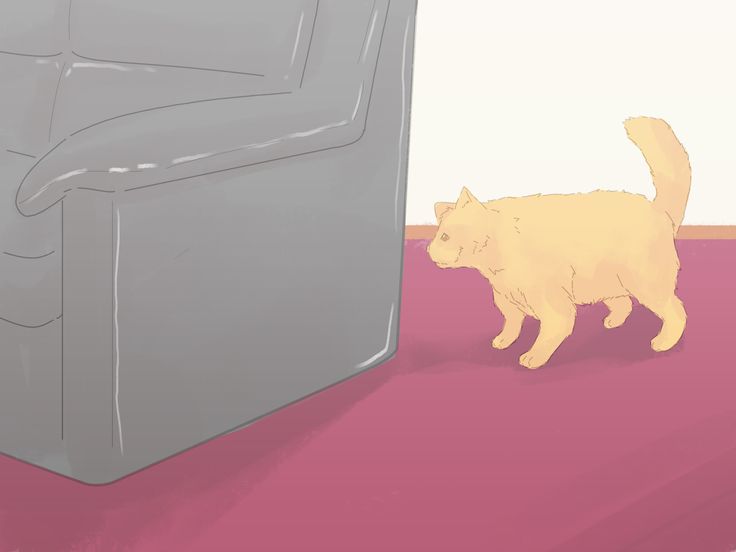
Orchifuniculectomy (removal of the testicles and their appendages), often referred to as castration, sometimes helps to cope with this unpleasant situation.
But there are cases when an animal continues to mark its territory even after sterilization. This usually happens if he has competitors (another male living in an apartment or house). In this case, the goal is to distract from competition (to get involved in games, training and other activities that develop intelligence), as well as to reduce the need to fight for territory (perhaps to expand the space of what is permitted, or, conversely, to provide an individual cage or house). In the process of weaning, special sprays and solutions for treating marks will be useful.
Sometimes it may surprise the owner that his walk-trained dog has made a puddle in the house. In addition to diseases of the genitourinary system and stress, which we wrote about above, this can happen for several reasons: can't wait to walk.
In addition to diseases of the genitourinary system and stress, which we wrote about above, this can happen for several reasons: can't wait to walk.

